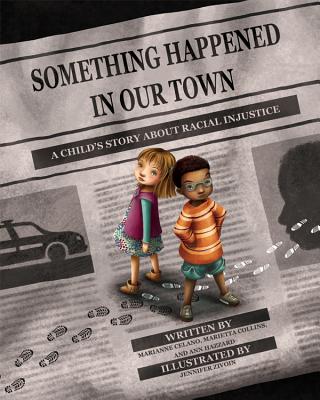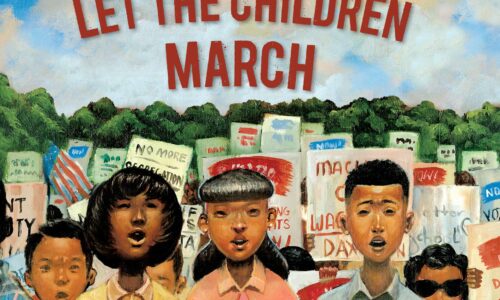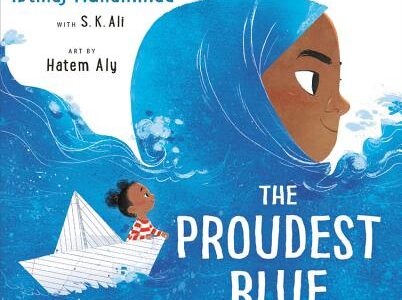In:Books
Something happened in Our Town: A Child’s Story About Racial Injustice
by Marianne Celano, Mareitta Collins, & Ann Hazzard
“Something happened in our town. The news was on the TV, the radio, and the internet. The grown-ups didn’t think the kids knew about it. But the kids in Ms. Garcia’s class heard some older kids talking about it, and they had questions.”
This beautifully illustrated book tells the story of two families, one White and one Black, as they discuss a recent police killing of an innocent Black man. The book does a thoughtful job of highlighting the different discussions that happen after an event like this occurs. It also focuses on the importance of not just thinking, but taking action to change the pattern moving forward.
Talk About It
- A great place to start is asking your children what they know about police shootings like the one mentioned in the story and what questions they have. If you don’t have an answer, it’s okay to acknowledge that and promise to learn more and get back to them. Allowing our kids to see that the adults are also trying to learn and help make change is so important.
- Emma’s family talks about Black people having been brought to America as slaves. It is important, especially with older children, to pause and take this discussion further. We need to educate our kids that people were captured, enslavedThe correct way to talk about slavery. It shows that slavery was something forced upon people. (No one ever chose to be enslaved. In fact, they were never given a choice.) It also reminds us to think about who all of these people were in their lives with family and friends. More, and then forced on to ships and brought to Europe and America. They were deemed to be property and had no rights or protections from being mistreated and hurt. Black people were believed to be less intelligent than white people. As a family, we know that none of this is okay. Discuss that there are still many ways in which Black people continue to be misjudged and mistreated even today. (Obviously there is so much more history to go in to. Allow your child to help pick out other books to read and learn from.)
- Take some time to talk about your family’s history with enslavement or prejudiceCreating ideas about someone we do not know based upon something like skin color or gender. Prejudices are generally negative. More. It is important to own the ways in which this is part of the pattern of your story before talking about the ways your family’s beliefs and actions have changed over time.
- The book acknowledges that some people still think that Black men and boys are dangerous. Has your child ever heard of that idea? Have they ever been told to feel that way or experienced feeling that way? If yes, let them know you want to understand the how and why so you can talk about it and learn.
- The mom gives the example of a birthday party where none of the Black students are invited. Pause and ask your child how they would feel if they were excluded from a party because of the color of their skin. Talk about the value of diversityThis word simply means differences. It generally refers to differences in things like race, gender, religion, language, culture, or appearance. More and developing friendships with people who aren’t exactly like you.
- Emma talks about standing up for her friend Ling. Ask your child how Emma and Ling must have felt in that moment. Talk about how reading that made you feel, as a parent.
- Josh’s family has to have many hard conversations, including talking about the fact that most police officers do not go to jail or lose their jobs for shooting innocent Black men. How do you think this fact makes Josh and his family feel? (Help your child understand the complexity of emotions beyond angry or scared. They also likely feel anxious, sad, and seen as unimportant and worthless by the very country they call home.)
- Why do you think it would make sense for Josh’s dad to be angry? Talk about that even in his anger, Josh’s dad knows the importance of working to make things better. Point out that White people need to take responsibility for creating change as well; especially while the political decision makers in this country are predominately White men.
- Look at the picture of Omad after he’s been excluded from joining in at recess. What is he likely feeling? Do you think you can tell what someone can or cannot do just by looking at them? Explain that making judgments about people based on what they look like, especially their accent or skin color, is called prejudiceCreating ideas about someone we do not know based upon something like skin color or gender. Prejudices are generally negative. More.
- What did you think or feel when Emma and Josh stood up for Omad and welcomed him as their friend? (Personally, I wanted to shout, “woo hoo! y’all are awesome!”) Do you think that was easy, medium, or hard for them to do? How do you think they felt after doing it?
Explore More
- As a family think about your values and how you want to help weave a better pattern for the world. Write up a family pledge that reflects these ideas and have everyone sign it. Share it with your extended family and friends and try to get others on board as well.
- Connect the book with the events currently happening in our country. Ask your children what message they would like to share with other people about how Black people should be treated by the police and everyone else. Let them make a sign to put in your front window or on your door.
- Encourage your child to think about communities they are part of such as school, camp, after school activities and the ways in which they embrace diversityThis word simply means differences. It generally refers to differences in things like race, gender, religion, language, culture, or appearance. More or need to make improvements. Talk about how your child can be an advocate for change.
- Role play with your child what they can say when they observe a student being treated negatively in a way that seems wrong. The more you practice words and actions ahead of time, the easier it will be for your child to use them in real life.
- Spend some time learning about Harriett Tubman, Martin Luther King, and Nelson Mandela. Talk about the important role each of them have played in changing the world for the better. Find things that inspire you and discuss what questions you still have.




